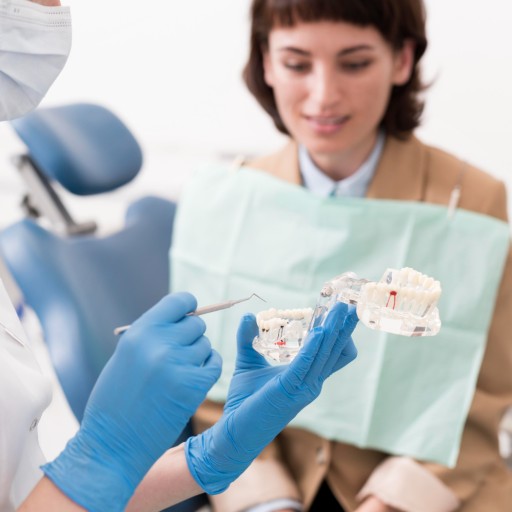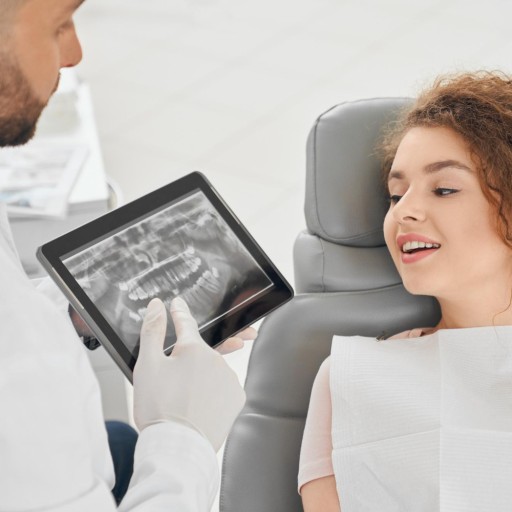Bone Graft
3 results foundBone Graft: Understanding the Procedure, Benefits, and Recovery
Bone grafting is a medical procedure that involves transplanting bone tissue to repair or rebuild bones that are missing or damaged due to injury, disease, or congenital conditions. It is done to promote bone healing and ensure structural integrity in dental, orthopaedic, and spinal surgeries. Bone grafts can be made from the patient's own bone, known as an autograft; from a donor, known as an allograft; or from synthetic materials, known as alloplasts. This article will explore the different types of bone grafts, their uses, benefits, potential risks, and the recovery process.
What is Bone Grafting?
Bone grafting is a surgical procedure used to treat bone deficiencies or defects by replacing lost bone with new tissue. The main purpose of bone grafting is to stimulate new growth and provide support to the broken area, thus helping in its effective healing. It can be done with the bone tissue of the patient itself, which is called an autograft; a donor, known as an allograft; or synthetic materials used as scaffolds for the growth of new bone cells. Bone grafting finds its application in dentistry, orthopedic surgeries, and in spinal fusion.
Types of Bone Graft
According to the patient's condition and the area in which the surgery will take place, there are different types of bone grafts, each with specific benefits. These include:
Autograft: This is bone tissue taken from the patient's own body, usually from areas such as the hip, rib, or shin. Since the tissue is from the patient's own body, the risk of rejection is minimal, and it promotes the best healing.
Allograft: In this type of bone graft, the bone tissue is taken from a deceased donor. Allografts are processed and sterilized to minimize the risk of infection. They are generally used when a large amount of bone is required.
Xenograft: This is a graft that takes bone tissue from a different species, usually bovine, or cow, bone. The xenograft provides a framework on which new bone can grow, but over time, it gets replaced by the patient's own bone.
Alloplastic (Synthetic Grafts): These are materials prepared from calcium phosphate and other man-made materials, including bioactive glass. Synthetic grafting materials mimic the shape and structure of the patient's bone, acting as an inducing agent in bone regeneration. Synthetic grafts are done in dental surgeries or smaller orthopedic procedures.
Common Uses of Bone Grafting
Bone grafting is adopted in many medical treatments due to the wide damage or loss of bones. Its common applications include:
Dental Implant Surgery: The majority of dental implants involve the use of bone grafts when there is insufficient bone in the jaw to support an implant. This commonly occurs in patients with loss of teeth due to periodontal disease or trauma.
Orthopedic Surgery: In orthopedic surgery, bone grafting is used to repair fractures, support joint reconstructions, and correct deformities. It is particularly useful when fractures do not heal properly, and additional support is needed to promote bone regeneration.
Spinal Fusion Surgery: Bone grafting in spinal surgery involves joining two or more vertebrae together and thereby stabilizing the spine to prevent further injury. It is very often performed for such conditions as degenerative disc disease, scoliosis, and after a spinal injury has taken place.
Trauma and Cancer Treatment: Patients who have experienced traumatic injuries to bones, or those with cancer resulting in bone loss, particularly during reconstructive surgery after tumor removal.
Benefits of Bone Grafting
Bone grafting offers several significant benefits, especially when traditional healing methods cannot effectively restore bone integrity. These benefits include:
Promotes Healing: The main advantage of bone grafting is its ability to promote new bone growth. It helps fill gaps in bones and supports the natural healing process by providing a scaffold for new bone tissue to grow.
Restores Functionality: The bone grafts are important in restoring functionality, especially in the joints or areas where bone loss might lead to instability or mobility issues. This can improve a patient's overall quality of life and reduce pain.
Prevents Bone Loss: By filling the bone defects or voids, it avoids further resorption and complication. This is of paramount importance in the structure like a jawbone that supports implant or denture.
Supports Joint Stability: The grafting of the bone, in orthopaedic surgery, can be used to stabilize joints, which promotes proper alignment especially needed in joint reconstruction procedures or spinal fusion.
Procedure of Bone Graft: What to Expect
The bone grafting procedure differs according to the type of graft and the area concerned. However, it normally follows these general steps in the process:
Preparation: The patient will have imaging tests prior to surgery, such as X-rays or CT scans, in order to understand the extent of the bone defect, thereby planning the grafting procedure.
Anesthesia: The procedure is performed under local anesthesia, for smaller areas, or general anesthesia, depending on the complexity of the surgery.
Bone Harvesting: In the case of an autograft, the surgeon will harvest bone tissue from another part of the patient's body, often taken from the hip, tibia, or rib.
Graft Placement: The harvested or synthetic bone graft is placed into the bone defect or gap. The surgeon may secure the graft with screws, plates, or pins to hold it in place.
Closure: The surgical site is closed, and the patient will be monitored during the recovery phase.
Recovery After Bone Grafting
Recovery after bone graft surgery may take different courses depending on the complexity of the procedure and the area treated. In general, recovery involves:
Post-Surgery Care: Pain and swelling may occur after bone graft surgery; however, pain management techniques such as medication, ice packs, and rest can help alleviate discomfort.
Rest and Activity Limitations: Patients are usually told to avoid heavy lifting for several weeks or months after the surgery to avoid placing stress on the graft site. Weight-bearing activities can be limited, especially for those undergoing joint and spinal surgeries.
Healing Time: The healing of the bone graft may take several months, depending on the kind of graft used and where the procedure is performed. Follow-up X-rays and doctor visits will monitor the progress.
Rehabilitation: Physical therapy or rehabilitation may be necessary, especially in orthopedic or spinal surgeries, to help restore full range of motion and strength.
Risks and Complications
There are a few risks and complications associated with bone grafting, even though the overall procedure is considered to be very safe. These include:
Infection: As with any surgical procedure, there is a risk of infection at the incision or graft site.
Graft failure may occur due to incomplete integration of the graft, a problem that happens mostly with synthetic grafts and allografts.
Pain or Swelling: Prolonged pain, swelling, or bruising at the donor site if an autograft is used or in the graft site may also occur.
Nerve Damage: This is rare but may occur with specific types of grafting operations, such as spinal or dental grafts, and may show up as numbness or tingling.
Long-Term Outlook
Bone grafting is a highly effective procedure with a good long-term outlook if done by a skilled surgeon. New bone tissue gradually fills in, eventually fusing with surrounding bone to achieve permanent repair of the defect. However, ongoing care and lifestyle changes, including not smoking and a nutritious diet, can enhance the outcome of the graft and enhance overall bone health.
In the end, bone grafting is a necessary procedure in both the repair of bone defects and the enhancement of natural body healing processes. Because of its large area of application and various benefits, it plays an important role in orthopedic, dental, and spinal surgeries and helps patients in regaining their mobility, functionality, and quality of life. Whether it's for fractures, implants, or helping in spinal fusion, the bone graft becomes an important solution for such difficult-to-treat conditions.



